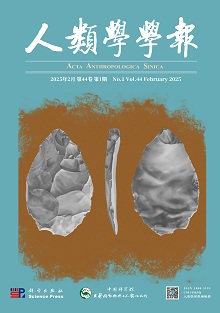Morphological features of ramapithecus and sivapithecus and their phylogenetic relationships——morphology and comparison of the crania
Wu Rukang (Woo Ju-kang), Xu Qinghua, Lu Qingwu
1983, 2(01):
1-112.
 Asbtract
(
814 )
Asbtract
(
814 )
 PDF (5054KB)
(
170
)
Related Articles |
Metrics
PDF (5054KB)
(
170
)
Related Articles |
Metrics
Since 1975 a late Miocene site at Shihuiba, Lufeng County, Yunnan Province has revealed a great number of fossil hominoids and other fossil animals. The hominoid specimens include Ramapithecus and Sivapithecu.
Ramapithecus: three crania, fo* mandibles, twenty pieces of fragments of crania and jaw bones, twenty dental rows and 278 isolated teeth ;
Sivcpithecus: two crania, five mandibles, 22 pieces of fragments of crania and jaw bones, seven dental rows and 290 isolated teeth.
In addition there are a few extremity bones of hominoids.
The major characters of the crania of Sivapithecus are as follows:
The face is short and wide, with both zygomatic archs spreaded outwards. Viewed laterally the mid-facial contour is concave from the supraorbital ridges to the naso_x001F_alveolar clivus, but the anterior region of the maxilla is markedly raised upwards. This feature is quite similar to orang-utan and GSP 15000 skull from Pakistan, and different from that of the gorilla and chimpanzee.
The temporal ridges are well developed. They start from both lateral segments of supra-orbital ridges, contact and parallel with them, and then turned strongly backward to form a median sagittal crest at the middle part of the vault.
The supra-orbital ridges are not continuous from side to side of the forehead. This is also an important feature of the Lufeng crania, which resembles that of orang-utan and GSP 15000 skull from Pakistan, but differs from gorilla and chimpanzee.
A specific character of the Lufeng crania is the wide concave glabella that is dif�ferent from those of all living apes and GSP 15000 skull.
The orbits have a sub-rounded contour. The interorbital region is quite broad and concave.
The positions of the infraorbital rims are located slightly below the superior margin of the nasal aperture.
The nasal aperture is specially narrow, and its lateral borders are bounded inferiorly by prominent canine juga. The concave-rounded naso-alveolar clivus is short and smallr with slight anterior naso-spinale. The canine fossae are very deep. The canines on botli sides diverge laterally downward into a reversed V-shape. This feature is also sttongly similar to that of orang-utan and GSP 15000, and different from- gorilla and chimpanzee.
The central incisor roots are very curved, thus exist the pronounced central incisor juga and a deep central incisor sulcus as in orang-utan and GSP 15000.
The dental arcade of the maxilla is sub-U-shaped, and is slightly diverged posteriorly.
A prominent feature of the central incisors is the particularly great labio-lingual breadth of their crown. The breadth-length indices of some teeth are even more than 100. This is different from all recent apes and GSP 15000 skull.
The lateral incisors are very small, only about one half size of the central incisors. The canines are relatively big. The crowns and cusps of the buccal teeth (premolars and molars) are of median height. They have thick enamel and crenated complex wrinkles on the occlusal surface of the crown, and no cingulum on the molars.
The PA 677 cranium is considered as a typical one of the Ramapithccus from Lu- feng. Its main morphological characteristics are basiccally concordant with those of Sivapithecus (PA 644), except relatively smaller in size, and is gracile in morphology.
The study of the crania of Ramapithecus and Sivapithecu^ from Lufeng shows that they are sexual dimorphism. They have many features similar to those of orang-utan, but different from gorilla and chimpanzee. It is suggested that they are the early ance�stor of orang-utan. The branch of orang-utan seems to be divergent from the hominoid main stock at about 12 Myr B. P.









